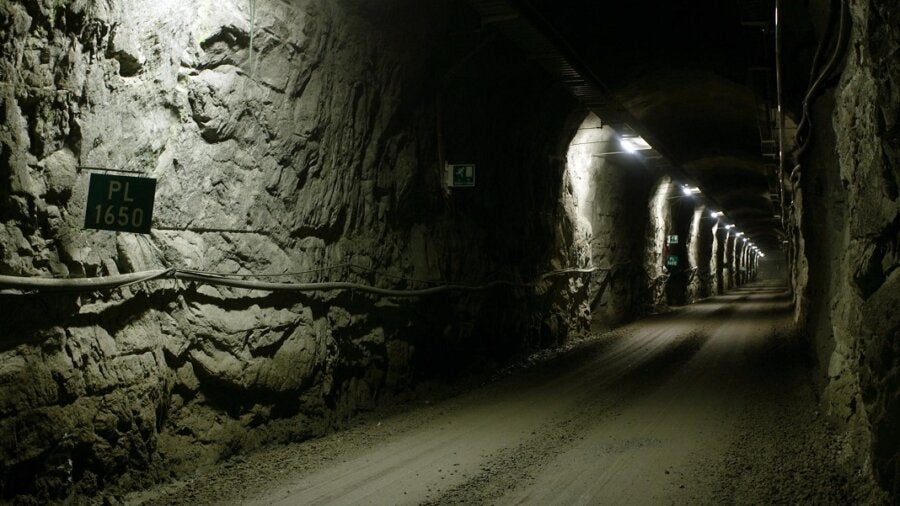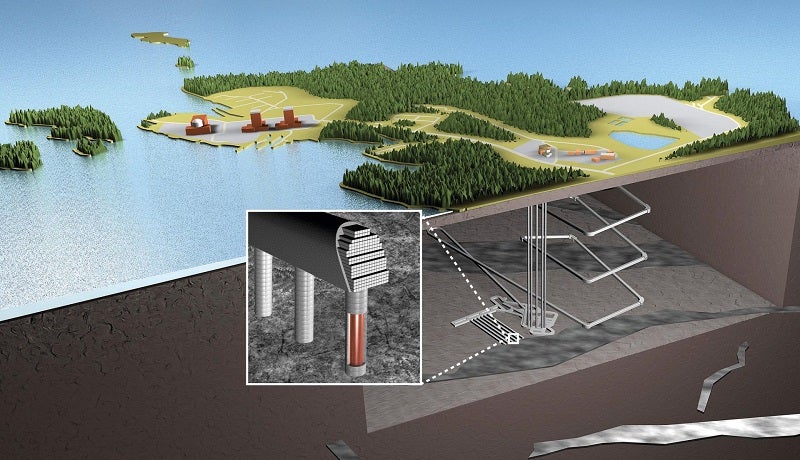
Even before Russia invaded Ukraine, the world was on the cusp of an energy crisis. As countries scramble to set ambitious carbon neutrality targets, it remains wholly unclear how those targets will be met, as eagerness to exit coal and other fossil fuels is far from matched by an equivalent capability to replace it with clean, cheap energy sources. In light of the geopolitical shift taking place around energy in the last month, with countries shunning Russia’s oil and gas but needing replacement sources—and not wanting to go back to long-term reliance on coal—the debate around nuclear energy has reignited. Except this time, there’s even more reason to be in favor of the ever-contentious power source than against it.
The biggest anti-nuclear arguments include risk of lethal accidents, increased access to materials that could be used to build nuclear weapons, and lack of a safe disposal method for nuclear waste. The latter could soon get some heavy pushback, though, as the world’s first permanent disposal facility for nuclear waste prepares to open in Finland.
The Onkalo spent nuclear fuel repository is on an island called Olkiluoto on Finland’s south-west coast, just over three hours’ drive from Helsinki. There were already two operating nuclear reactors on Olkiluoto, and after more than a decade of delays, a third finally launched test production at 0.1 gigawatts earlier this month, aiming to reach its full 1.6 GW capacity by July. Once that happens, nuclear power will account for over 40 percent of Finland’s total electricity production, bumping it even higher from its existing spot on the list of top countries in the world for nuclear energy reliance.
Each statistic about the disposal facility’s development and how it will function is more mind-blowing than the last.
Here’s the basic premise: spent fuel rods from nuclear reactors will be encased in layers of various materials before being lowered into tunnels 430 meters (1,411 feet, right around the height of the Empire State Building counting its spire) underground, where they’ll safely decompose over the course of 100,000 years—the amount of time for which nuclear waste remains toxic.
It’s all admittedly pretty difficult to wrap your head around.
The project has been in the works for over 25 years, ever since Posiva, the company spearheading it, started searching for an adequate site in Finland in the mid-1990s. Olkiluoto was chosen because of its position halfway between two geological fault lines (not that there’s much probability of an earthquake occurring; geologists assert that the bedrock on which the region lies “has been mostly stable for the past billion years”), and because that bedrock is composed of a type of rock called gneiss that’s nearly impossible for water to permeate.
This matters because, as Canada’s Nuclear Waste Management Organization director of geoscience Sarah Hirschorn told Science, “The only way for things to move from the repository out to the surface and to impact people is to be carried by water.”
Besides the rock, there will be multiple other barriers between the buried reactor rods and the outside world (including any water that might find its way into the tunnels). Robots will seal the rods inside cast-iron canisters, which in turn will go into copper canisters. Machines will inject argon gas between the two canisters to provide an inert atmosphere, and the copper cask will be welded shut. 30 to 40 copper casks will go into one giant hole, which will be sealed with a clay called bentonite, then sealed again with concrete.
So it definitely seems like that stuff isn’t going anywhere, at all, ever, for the rest of time—which is exactly the goal.

However, one issue, addressed in a documentary about the project’s ethical implications called Into Eternity, is how to ensure that distant future generations aren’t harmed by the waste. How to communicate its danger without knowing whether, in say 85,000 years, humans will still speak and read language the same way we do now? Black and yellow images of skulls and crossbones aren’t going to cut it either (plus, what would they be made of to ensure they’d last 100,000 years?).
While it seems unlikely future generations will be nosing around hundreds of meters underground, who’s to say what kinds of unimaginable technologies will exist by then? 200 years ago, a fraction of the length of time we’re talking about here, the idea of now-commonplace technologies like smartphones was inconceivable; similarly, we can’t even begin to imagine what humanity and civilization will look like in 500 times as long. In any case, how will our generation fulfill its moral obligation to keep future humans safe from our toxic trash?
Somewhat ironically, this is the same question being posed around climate change and carbon emissions (though 100,000 years is a totally different scale), the very phenomena that nuclear energy could help alleviate. And by many estimates, nuclear will be necessary to alleviate our energy problems, though it’s a solution whose benefits will come with their own set of costs.
In his excellent piece for Science, Sedeer El-Showk emphasized the importance of Finland’s political climate and culture for not only getting the Onkalo project off the ground, but seeing it through to completion. “In Finland, there is a very high level of trust in science and in the authorities,” Matti Kojo, a political science researcher at Tampere University in Finland, told El-Showk. “If the national authority says the repository is safe, they don’t need to worry about it.” This is unfortunately a far cry from reality in the US and many other countries. In fact, a similar initiative in Nevada called Yucca Mountain has been mired in political controversy for 35 years.
Scientists, engineers, energy companies, and governments will grapple with the costs and benefits of nuclear power for decades to come, and despite growing urgency, it remains to be seen whether it will ultimately triumph as a sustainable energy source. In the meantime, kudos to Finland for being the first to take a big step forward; the Onkalo facility is under construction and slated to start operating in 2024.
Image Credit: Posiva
* This article was originally published at Singularity Hub

0 Comments